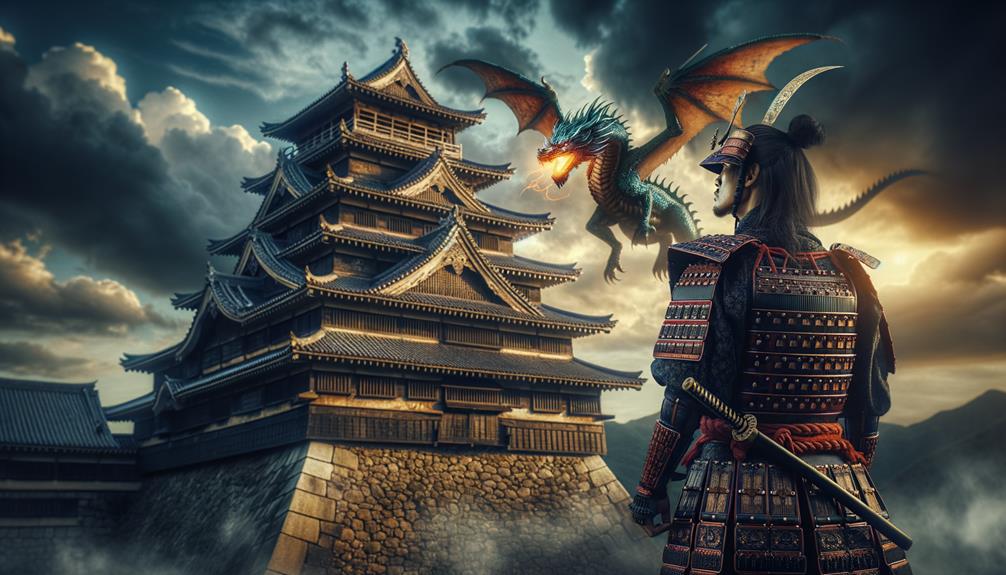Try to imagine looking into a mirror and seeing a distorted reflection, as though seen through a fog of myth and legend. This is how I view the historical portrayal of the samurai, a warrior class from feudal Japan that's often romanticized and misunderstood. Through my academic work, I've aimed to distinguish the real from the imagined, peeling away the layers of added decoration to reveal the true samurai. They were not merely warriors; they were poets, philosophers, and statesmen who had a hand in crafting Japan's history. Don't be fooled by the stereotype of the heartless, merciless killer. There is so much more to the samurai. So, come with me, and let's step beyond the myth together.
Origin and Evolution of Samurai

Let's step back in time and take a look at Japanese history. The samurai, who first appeared as guards for wealthy landowners back in the 8th century, gradually transformed into a unique social class that served the Imperial Court. Their rise to prominence can be credited to influential warlords, for instance, Minamoto no Tomo. The word "samurai" represents this centuries-long progression, from mere guards to symbols of authority and discipline.
When we look into how the samurai evolved, it's clear that their role grew over time. The Bushido code played a key part in shaping their reputation and status. This code highlighted the importance of bravery in warfare, acknowledging one's lineage, and strictly following a code of conduct. It was under these feudal lords that the identity of the samurai truly came to life.
Training for the samurai started with mastering horse-riding skills and archery. Over time, they introduced iconic weapons like the katana and wakazashi to their combat repertoire. These weapons became closely linked to the samurai identity, reinforcing their unique standing.
The armor worn by the samurai also changed over the centuries. The earlier heavy metal plates gave way to more flexible materials like leather. Their helmets, embellished with symbols that indicated rank and lineage, highlighted their individuality and stature. In this way, the samurai grew from mere guards to respected warriors, their story forever interwoven with the history of Japan.
The Bushido Code Explained
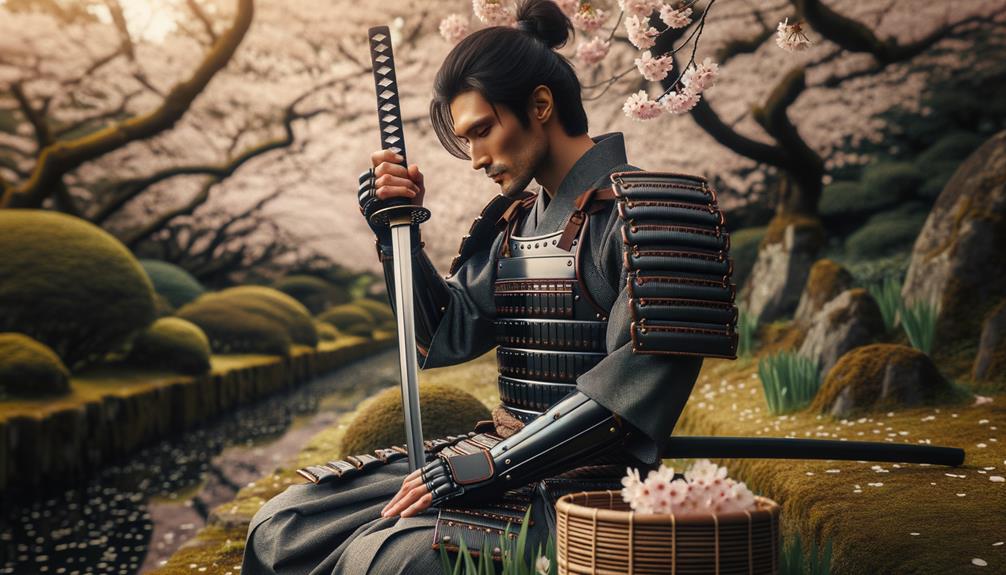
Let's have a chat about the core of the Bushido code, the ethical bedrock that steered the samurai, instilling in them the values of courage, faithfulness, and dignity. This code, rooted in samurai tradition, was a critical part of samurai education and disciplined behavior.
- Creation of the Bushido Code: This code took shape under the rule of feudal lords, sculpting their reputation and standing by adhering to its rules. It served as a strategic instrument to ensure order and compliance.
- Samurai Education: The focus of samurai education was on martial arts, horse riding skills, and distinctive weapons. The Bushido code was the benchmark for this rigorous education, guaranteeing the observance of its doctrines.
- The Reality on the Battlefield: Fighting wasn't always an act of nobility. Samurai often engaged in battles for monetary profit and social climb, challenging the idealized view of Bushido.
- The Lasting Impact: Despite its historical subtleties, the Bushido code's impact still inspires today's society, with the values of courage, faithfulness, and dignity continuing to echo in our times.
Iconic Samurai Weapons
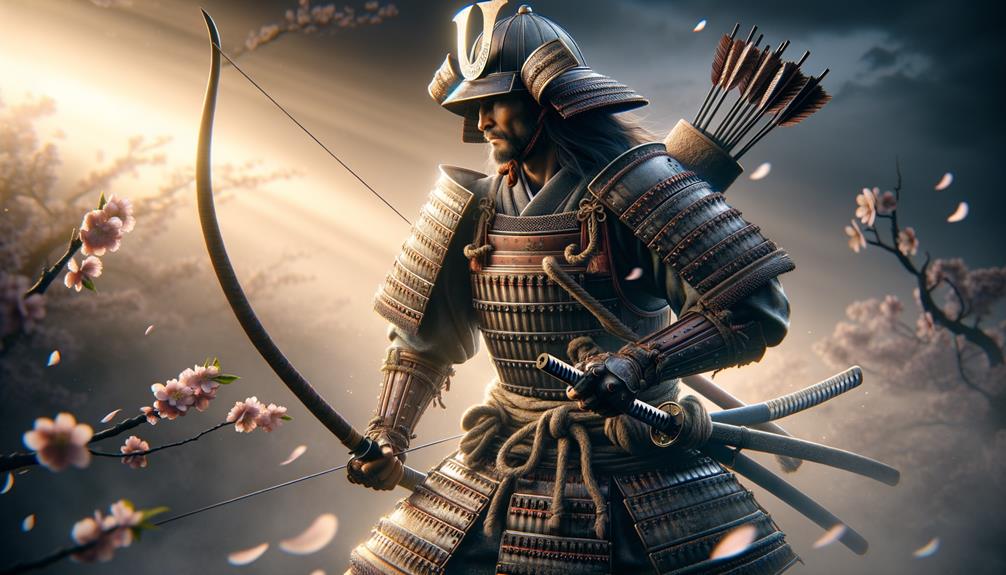
The katana, a curved sword made from tamahagane steel, is the ultimate emblem of the samurai—representing their martial skill and societal standing in the times of feudal rule. This legendary weapon, along with its shorter companion, the wakizashi, were precious to these warriors. Only a true samurai had the right to use these swords, a privilege deeply rooted in the societal hierarchy of the era.
Over time, 17 different versions of these famous samurai weapons appeared, each crafted with meticulous attention to detail. Samurai were not just skilled in the use of swords—they were also proficient in archery and horse-riding. Their training was a tough mix of physical stamina and mental control.
The armor worn by samurai changed along with their weaponry. It moved from stiff metal plates to more adaptable strips of iron or bronze. The armor was just as much a sign of a samurai's rank as their swords, with unique colors and emblems showing their rank and origin. In essence, a samurai's gear wasn't just a set of tools for war, but a reflection of their identity and status.
Debunking Samurai Myths
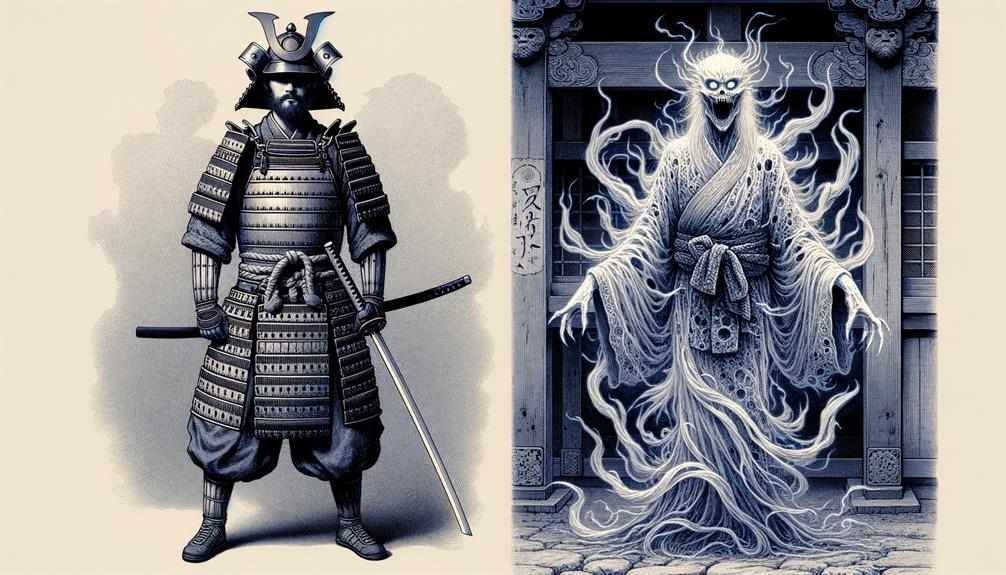
Let's chat about samurai and some misconceptions that might be distorting our view of these famed warriors. It's crucial to clear up these misconceptions to portray a more truthful image.
Let's start with the first misconception. Samurai are often dramatized in tales of battle and duels, but these stories have been blown out of proportion in both spoken and written accounts.
Next is the misconception about legendary figures like Miyamoto Musashi, Tsukahara Bokuden, and Date Masamune. These people have been turned into larger-than-life characters, which often overshadows their actual accomplishments.
Then there's the misconception about samurai loyalty. Sure, loyalty was a big deal, but there are historical records showing samurai switching sides for personal gain or survival.
Lastly, there's a misconception that samurais were all men. But that's not true. Women, like Tomoe Gozen, were also part of the samurai class, leading armies and fighting in battles.
These misconceptions can lead to a misleading view of samurai. Their real value lies in their historical contributions and cultural importance, not in the exaggerated tales that have been spun around them.
Lesser-known Samurai Facts
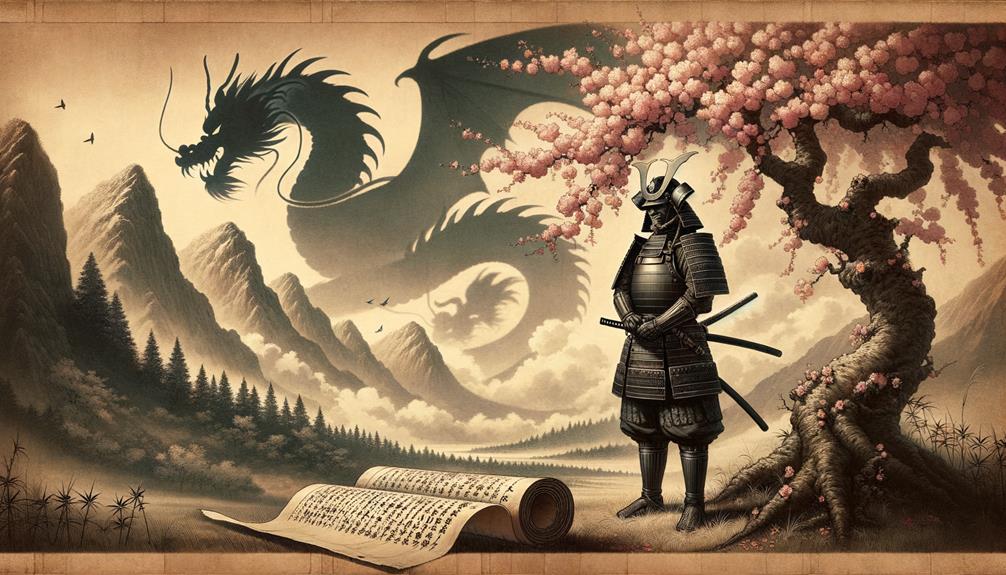
Let's have a chat about some lesser-known facts concerning samurai that may change your mind and deepen your knowledge about these impressive fighters. You might think of samurai as just swordsmen, but they actually started out as personal protectors for rich landowners in the 8th century. Over time, they grew into the respected military elite of Japan.
Now, let's talk about what they ate. You might think they indulged in lavish feasts, but their meals were actually quite modest and nutritious, including foods like rice, miso soup, vegetables, and fish. And here's an interesting tidbit: women could also become samurai. The legendary Tomoe Gozen is a perfect example of this.
Samurai continue to be popular figures even today, as seen in traditional Japanese Kabuki and Noh theater and in modern media. This shows just how much they've influenced Japanese history. And their armor? It went from stiff metal plates to bendable strips of bronze or iron, proof of their inventive spirit.
| Origins | Diet | Armor |
|---|---|---|
| Protectors for rich landowners | Rice, miso soup, vegetables, fish | Changed from metal plates to flexible strips |
These little-known samurai facts give us a broader, deeper understanding of this unique warrior class, highlighting the wide scope and richness of samurai history.
Frequently Asked Questions
What Is a Famous Samurai Myth?
You've probably heard about Miyamoto Musashi, right? He's this famous samurai who's often depicted as unbeatable in duels. But, and here's the interesting part, if we dig a little deeper into the historical records, we find a more layered and human story. It's not all about his winning streak in battles. His life was much more intricate and fascinating than that.
What Is the Origin Story of Samurai?
Ever wondered where the samurai came from? Let's take a hop, skip, and a jump back to Japan's Heian period. This is where it all began for the samurai, starting off as protective figures for the deep-pocketed landowners. They didn't stop there, though. They went on to create private armies, flexing their muscle and showing their might. One name stands out in their rise to power – Minamoto no Tomo. Under his rule, the samurai didn't just grow prominent, they carved out a unique social position that set them apart.
What Is the History of the Samurai Warriors?
Did you know that samurai warriors have been around since the 8th century? Back in the day, these warriors began as security personnel for the well-off landowners. Over time, they developed into a special group, providing their services to the Imperial Court and military leaders. Their roles, interestingly, changed with each passing era and under different shogunates.
What Was the Ultimate Fate of the Samurai?
You know how leaves fall off trees when autumn comes around? Well, that's kind of what happened to the samurai class. When feudalism came to a close, they didn't just disappear. Instead, they morphed into different roles such as educators and administrators. And guess what? Their legacy didn't just fade away into nothingness. Even today, their influence can be felt in modern Japanese culture, inspiring values like discipline and honor.

